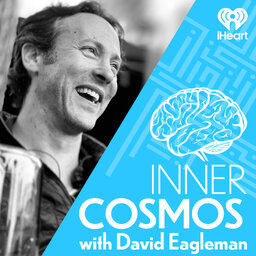Ep78 "Does your brain have one model of the world or thousands?"
Why do you see a unified image when you open your eyes, even though each part of your visual cortex has access to only a small part of the world?
What is special about the wrinkled outer layer of the brain, and what does that have to do with the way that you explore and come to understand the world? Are there new theories of how the brain operates? And in what ways is it doing something very different than current AI? Join Eagleman with guest Jeff Hawkins, theoretician and author of "A Thousand Brains" to dive into Hawkins' theory of many models running in the brain at once.
 Inner Cosmos with David Eagleman
Inner Cosmos with David Eagleman


